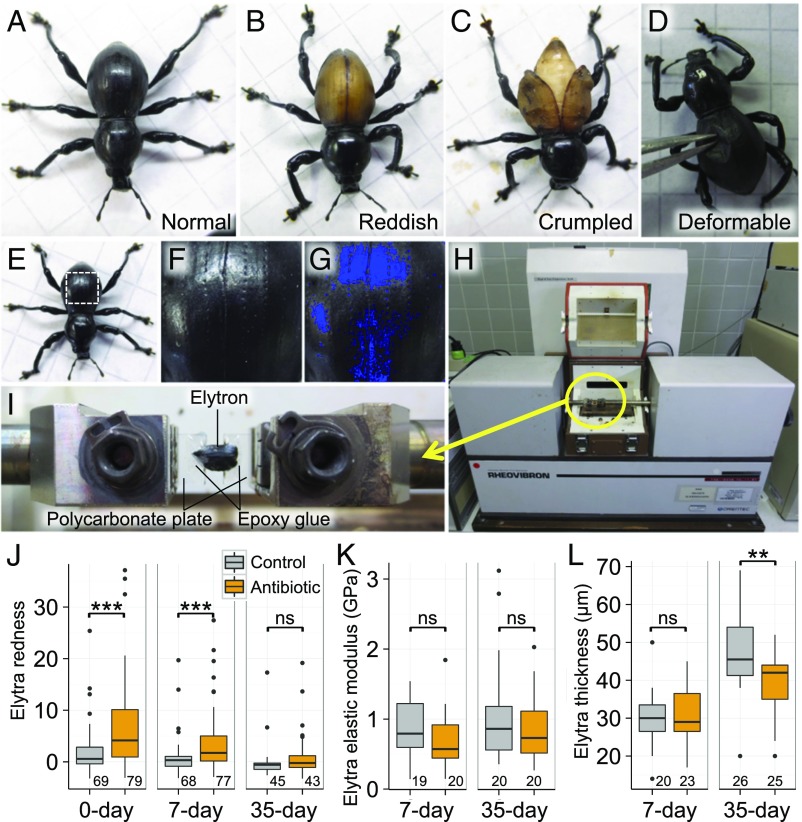Fig. 6.
Effects of Nardonella suppression on adult color and cuticle formation in P. infernalis. (A) A control adult insect with black and hard elytra. (B–D) Antibiotic-treated adult insects with reddish elytra (B), crumpled fragile elytra (C), and soft and deformable elytra (D). (E–G) The process of quantifying the redness of elytra. From each of dorsal images of adult insects (E), a square area of maximal size (dotted square) was extracted. On the square image (F), the pixels whose brightness was either over top 10% or below bottom 10% were masked in blue (G) and excluded from the analysis to minimize the effects of highlights and shadows. Then, red-green-blue (RGB) values for all (=n) pixels were measured and averaged to obtain the redness index by Σ (R − mean [R, G, B])/n. (H and I) The system for measuring the viscoelasticity of elytra. On the stage of a viscoelastometer (H), each sample elytron was set by gluing onto two plastic plates with epoxy resin (I) to measure elastic modulus. (J–L) Elytra redness (J), elytra elastic modulus at 10 Hz (K), and elytra thickness (L) of the control and antibiotic-treated adult insects 0, 7, and 35 d after emergence. Asterisks indicate statistically significant differences [Wilcoxon rank sum test for (J), and t test for (K) and (L): ***P < 0.001; **P < 0.01; ns, no significant difference]. Tukey box plots are as shown in Fig. 4 G and H.

